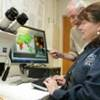Abstract
In planning extension programming, collecting and analyzing information about client needs can be expensive and time consuming. This revised 4-page fact sheet describes the benefits and limitations of using secondary data, how to evaluate it, and ways to locate quality secondary data. Written by Cheri Winton Brodeur, Glenn D. Israel, and Diane D. Craig, and published by the UF Department of Agricultural Education and Communication, October 2011.
PEOD10/PD010: Using Secondary Data to Build Strong Extension Programs (ufl.edu)
References
Atkins, A. B., & Brandolini, A. (2001). Promise and pitfall in the use of "secondary" data-sets: Income inequity in OECD countries as a case study. Journal of Economic Literature, 39(3), 771-779. https://doi.org/10.1257/jel.39.3.771
Dillman, D. A., Smyth, J. D., & Christian, L. M. (2009). Internet, mail, and mixed-mode surveys: The tailored design method (3rd ed.). Hoboken, NJ: John Wiley & Sons.
Israel, G. D. (1993). Problem/audience identification for county Extension program planning. Retrieved from http://edis.ifas.ufl.edu/pdffiles/PD/PD01200.pdf
Sorenson, H. T., Sabroe, S., & Olsen, J. (1996). A framework for evaluation of secondary data sources for epidemiological research. International Journal of Epidemiology, 25(2), 435-442. https://doi.org/10.1093/ije/25.2.435
White, P. (2010). Making use of secondary data. In N. Clifford, S. French, & G. Valentine (Eds.), Key methods in geography (pp. 61-76). Thousand Oaks, CA: Sage.

